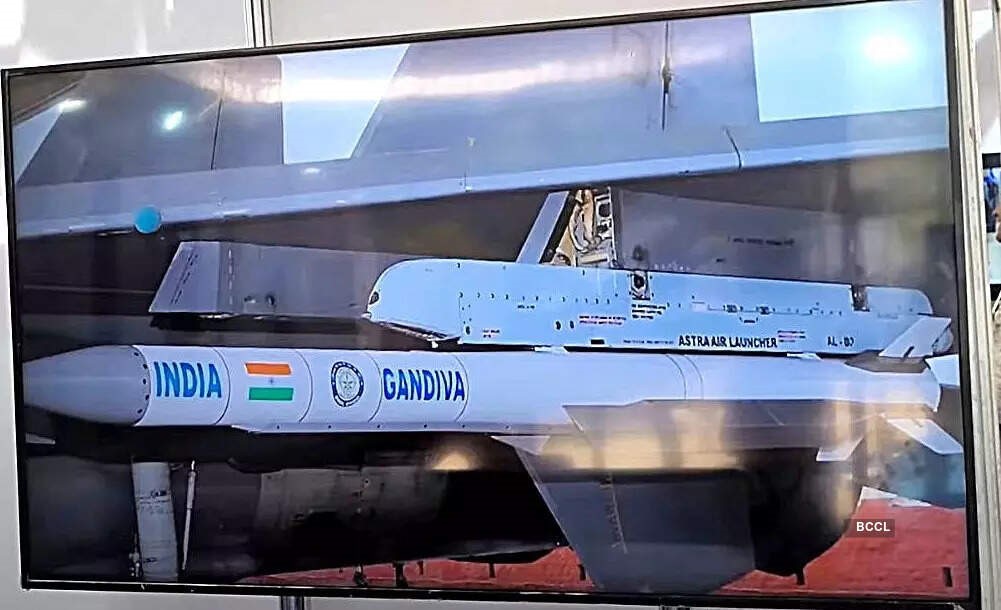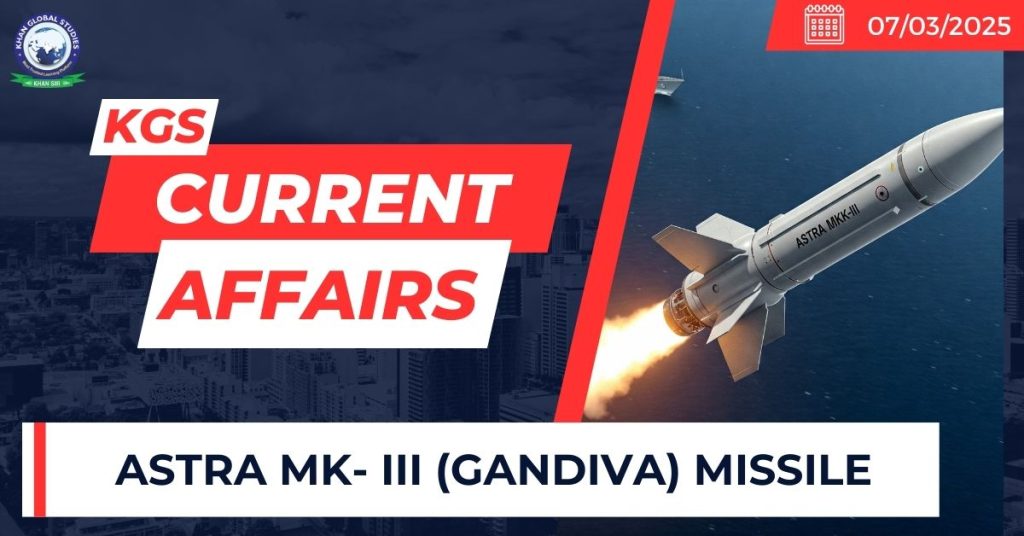Context: India has recently renamed its latest and most advanced air-to-air missile, the Astra MK-III, as Gandiva, after the legendary bow of Arjuna from the Mahabharata.
About Astra MK- III

- It is a very long-range beyond-visual-range air-to-air missile (BVRAAM).
- It is powered by a dual-fuel ducted ramjet engine, enabling it to be launched from an IAF jet at sea level or as high as 20 km in altitude.
- It has one of its most advanced features is its ability to engage highly maneuverable fighter aircraft and has an attack angle of 20 degrees.
- It has a ±10 km snap-up/snap-down capability, letting it engage targets at varying altitudes-either higher or lower than the firing aircraft.
- It is capable of targeting a variety of aerial threats, like enemy fighter jets, bombers, military transport aircraft, refueling planes, and Airborne Warning and Control System (AWACS) aircraft.
- It is built on the success of its predecessors, the Astra Mkl (80-110 km) and Mkll (140-160 km), and reflects India’s push for self-reliance in defense technology Under Atmanirbhar Bharat.
- Features:
| Specification | Value |
| Length | 3838 mm |
| Diameter | 178/200 mm |
| Altitude | SL-20 km |
| Speed | Mach 4.5+ |
| Launch Mach Number | 0.8 – 2.2 |
| Interception Mach Number | 2.0 – 3.6 |
| Missile Range | 190 km at 8 km altitude |
| 340 km at 20 km altitude | |
| Angle of Attack | Snap-up & snap-down |
| Weight | ±10 kg |
| Launch Platforms | SU 30, LCA |
| Guidance | Midcourse: Inertial 2-way Data Link |
| Terminal: BCCL (Homing) |

